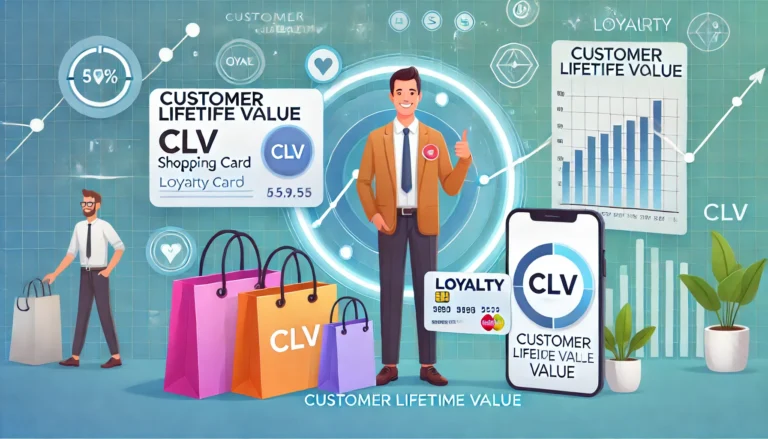Measuring customer experience in physical retail environments is a fantastic way to ensure that your stores provide customers with everything they need and want. Think about the last time you had a great shopping experience – was it the friendly staff or the well-organised store that made it great? Perhaps it was a seamless checkout process. Whichever it was, all of these elements can contribute to customer satisfaction. Understanding how customers perceive their shopping experiences is paramount for retailers to enhance their services and stand out in a competitive market.
Customer experience encompasses everything that happens during a customer’s journey within a store. It’s not just about the products on the shelves; it’s about the overall atmosphere, how helpful the staff is, and whether the store layout is intuitive. By measuring customer experience, retailers can uncover customer insights that guide their decision-making and help them create better customer experiences.
Here are five ways retailers can measure and track their customer experience in-store. These can be used individually or can be combined to build a broader and richer view of the overall experience.
Mystery shoppers
Imagine having someone visit your store as a regular customer, observing every detail and providing feedback from a customer’s perspective. That’s the role of a mystery shopper. These undercover evaluators are fantastic for measuring customer experience in physical retail environments.

Mystery shoppers pose as typical customers and visit stores to assess various aspects of the shopping experience. They discreetly observe everything from when they enter the store to when they leave. They give feedback on individual staff members and the overall service, and confirm that staff follow brand protocols. Mystery shoppers can identify pain points, highlight areas of excellence, and provide specific feedback that may not be apparent to store owners or employees.
By engaging mystery shoppers, retailers gain a perspective into the strengths and weaknesses of their operations. The feedback provided by mystery shoppers helps identify areas for improvement, enhances staff training programs, and ultimately leads to a better customer experience.
Exit surveys
In addition to using mystery shoppers, another effective strategy for measuring customer experience in physical retail environments is conducting exit surveys. Exit surveys are an excellent way to capture real-time impressions and gather customer feedback as they leave the store. One of the easiest is a simple button system where customers can press happy or frowny faces for their experience.
Other options are brief questionnaires and feedback forms that customers can complete after their shopping is complete. These surveys can be offered physically or digitally. They serve as a tool for retailers to gather immediate feedback and understand customers’ satisfaction levels and pain points. By capturing real-time feedback, retailers can understand the immediate impact of their services, allowing for prompt action and improvements.
Frictionlessly capture feedback via digital receipts
Technology continues to revolutionise retail operations, and capturing customer feedback is no exception. By leveraging innovative solutions like interactive digital receipts, retailers can seamlessly capture customer feedback and gain practical ideas to enhance the customer experience.
By allowing customers to receive receipts digitally via a QR code without the need to give their email addresses, retailers can simplify the checkout process and reduce paper waste. Digital receipts also serve as a convenient channel for customer feedback, eliminating the need for cumbersome paper surveys or follow-ups.
refive’s digital receipt system and customer engagement platform is one such solution. It seamlessly integrates with retail systems and offers a user-friendly interface for customers to leave feedback electronically. Retailers can effortlessly gather real-time customer insights while offering a modern and eco-friendly receipt experience.
The ability to collect feedback alongside customer data provides retailers with even more meaningful insights for continuous improvement. By analysing this data, retailers can understand the shopping experience of particular customer segments such as their most loyal customers or new-to-this-store customers.
Talk directly to customers
While technology provides helpful feedback channels, the significance of engaging in direct conversations with customers cannot be overstated. Directly speaking with customers allows retailers to establish a personal connection, gain immediate information, and show customers that their opinions are valued.
Store staff are pivotal in initiating conversations with customers and proactively seeking feedback. Encourage your staff to approach customers in a friendly and non-intrusive manner. This will create an inviting atmosphere where customers feel comfortable sharing their thoughts. By initiating conversations, staff can ask open-ended questions about the shopping experience, actively listen to customers’ responses, and genuinely engage in meaningful discussions.
Training staff members to be attentive listeners is crucial to ensure effective feedback collection. Providing them with active listening techniques and emphasising the importance of taking notes during the conversation can make a huge difference.
Encourage staff to jot down customer suggestions, concerns, and compliments for future reference and improvement. This practice demonstrates a commitment to continuous enhancement and helps ensure that they are capturing everything.
Social media & review monitoring
In today’s digital age, social media platforms have become powerful tools for measuring customer experience in physical retail environments. Customers frequently take to social media to share their shopping experiences, offering instant feedback, opinions, and recommendations.
By monitoring and analysing social media conversations, retailers can get an honest view of customer satisfaction and make data-driven improvements.
The Internet allows customers to express their thoughts and experiences openly. They may share positive reviews, praise exceptional customer service, or highlight improvement areas.
Similarly, dissatisfied customers may voice their concerns, allowing retailers to address issues promptly and rectify any negative experiences. This real-time feedback on social media and via avenues such as Google My Business and Trustpilot offers a unique opportunity to gauge customer sentiment. It also helps retailers better understand customer preferences, expectations, and trends.

Key to measuring customer experience in physical retail environments
Measuring customer experience in physical retail environments is essential for businesses to thrive in today’s competitive market. By implementing these five strategies, retailers can enhance their services in order to create exceptional shopping experiences.
It is the cornerstone of attracting and retaining loyal customers. By listening to customer feedback and addressing concerns, retailers can create a customer-centric environment that sets them apart from the competition.
If you’re interested in experiencing how refive’s digital receipt and data capture platform can help you seamlessly capture customer feedback and enhance retail experience, schedule a demo now.








